Last Updated on September 16, 2023
Among the most popular roofing materials for your home, two popular choices are shiplap and plywood roofing. While both roofing materials offer unique benefits, it can be challenging to determine which material will provide the best protection for your residence.
Plywood roofs are made from thin wood veneers glued together at right angles. A shiplap roof is made from overlapping boards of wood like cedar or pine. However shiplap roofs are prone to water infiltration, but plywood roofs do better when coated with waterproofing materials.
Through this article, we will discuss the differences between shiplap and plywood roofing regarding material composition, appearance, water resistance, and more. After reading this article, you can decide better about your roofing project.
6 Key Differences Between Shiplap Roof and Plywood Roofing
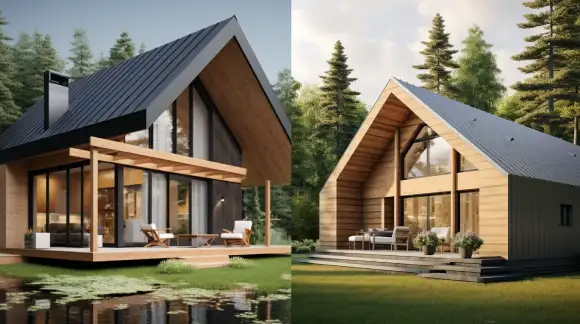
When considering the key differences between a shiplap roof and plywood roofing, there are several important factors to consider.
- Material composition
- Appearance
- Fire resistance
- Water resistance
- Durability
- Installation
- Cost
Material Composition
If you’re considering a shiplap roof, you’ll appreciate its authentic wooden boards that create a charming and rustic look. Shiplap roofs use overlapping solid wood boards, typically made from cedar or pine. These boards are carefully cut and installed to create a tight seal that protects your home from the elements.
On the other hand, plywood roofs are made from multiple layers of thin wood veneers glued and pressed together at right angles. This engineered wood product offers uniform strength and durability, making it a practical option for many homeowners.
Appearance
Shiplap roofs have a distinct aesthetic with visible horizontal lines created by the overlapping boards. This design gives your home a unique and eye-catching appeal often associated with traditional or farmhouse-style architecture.
Meanwhile, plywood roofs have a smoother and more uniform surface due to their manufactured nature. They lack the distinctive horizontal lines of shiplap but provide a clean, sleek, and contemporary look often preferred in modern architectural designs.
Fire Resistance
Shiplap, made from traditional wooden materials, is not inherently fire-resistant. However, modern shiplap versions have fire-resistant materials like fiber cement, inorganic minerals, or flame-retardant additives. These materials can significantly reduce the risk of a fire breakout.
As opposed to this, plywood is inherently combustible, but the fire-retardant treatment can make it less vulnerable to burning immediately in case of a fire. FRT plywood is specially designed for buildings that require a high level of fire protection.
It has been impregnated with fire-retardant chemicals following American Wood Protection Association Standard U1. This treatment ensures that FRT plywood has a flame spread of 25 or less when tested for 30 minutes.
Water Resistance
To ensure a watertight seal, properly seal and maintain the overlapping boards of your shiplap roofing. Shiplap roofs are more susceptible to water penetration between the overlapping boards, which can result in leaks if not addressed.
Plywood roofing, however, offers better resistance to water penetration when coated with waterproofing materials. When properly installed, plywood roofs provide a more watertight seal than shiplap roofs.
The key lies in ensuring the plywood is adequately sealed and maintained to prevent potential water damage.
Durability
Regarding durability, you’ll find that plywood is a more reliable option than shiplap. Plywood roofs are engineered to be strong and durable, making them less prone to warping, cracking, or rotting than individual wooden boards used in shiplap roofs.
Alternatively, shiplap roofs can be durable if well-maintained and adequately protected from moisture. But, the individual boards may degrade over time, especially in harsh weather conditions.
Installation
When installing a shiplap roof, be prepared for more labor-intensive work. Each board must be overlapped and aligned carefully, ensuring a tight fit and proper water resistance. This meticulous process can result in a longer installation time than plywood roofs.
Conversely, plywood sheets are typically larger and easier to handle, making the installation process faster and more straightforward. With their standardized dimensions, they can be quickly nailed or screwed into place, saving you both time and labor costs during construction.
Cost
Due to the need for solid wood boards, shiplap roofs can be more expensive than plywood, depending on the wood used. This roofing requires high-quality, durable wood that withstands weather and environmental factors. Solid wood construction costs more because it requires more labor and specialized installation.
Plywood, on the other hand, is generally less expensive due to its composite nature. It is made by layering thin sheets of wood together, making it more affordable and readily available than shiplap. Plywood is a cost-effective alternative to shiplap that is aesthetically pleasing and durable.
Can shiplap be used for roofing?
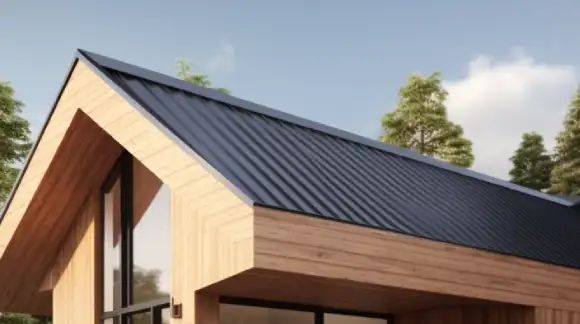
You should consider using plywood instead of shiplap for your roof to minimize the risk of water infiltration and potential leaks. While shiplap is commonly used in construction, it is not the best choice for roofing due to its inherent design flaws.
Shiplap roofs are susceptible to water infiltration between the overlapping boards, leading to moisture buildup and eventual leaks if not properly sealed or maintained.
What is the best plywood board to use for roofing?
When choosing the best board for roofing, OSB (oriented strand board) plywood is preferred due to its durability and resistance to water damage. This plywood consists of multiple layers of wood veneer glued together with grain directions alternating at 90-degree angles.
This construction creates a strong and stable panel that can withstand the weight and stress associated with roofing applications. Also, OSB has excellent dimensional stability, meaning it resists warping or twisting when exposed to changes in moisture levels or temperature.
It also provides a smooth surface for securely attaching shingles or other roofing materials. Plywood comes in various thicknesses, allowing you to select the appropriate board based on your rafters’ span and structural requirements.
How thick should plywood be for the roof?
For a standard asphalt shingles roof, you’ll want to use at least 5/8 inches thick plywood. This thickness is necessary to provide adequate support for the weight of the shingles and withstand typical loads on a residential roof. The plywood acts as a solid base layer, ensuring the stability and durability of the roof structure.
When choosing plywood for your roof, consider its quality and strength. Look for plywood designed for roofing applications like CDX or OSB sheathing. These types of plywood are engineered to withstand moisture and weather conditions commonly found on roofs.
How long does plywood last on a roof?
If you’re wondering how long plywood can last on a roof, consider factors like maintenance and weather conditions.
Plywood typically lasts around 30 to 40 years with proper care. Regular maintenance is crucial to ensure its longevity. This includes inspecting the roof for any signs, such as rotting or water damage.
Also, ensuring that the plywood stays dry is essential for its durability. Moisture can cause the wood to weaken and degrade over time. Therefore, address any leaks or water infiltration promptly.
What is the best way to waterproof plywood roofing?
The best waterproofing for plywood roofing is epoxy or an exterior-grade paint that’s waterproof. Epoxy is advantageous because it makes the plywood waterproof and strengthens it. This means that not only will your roof be protected from water damage, but it will also have added durability.
Using paint can be just as effective if you prefer a simpler method. Choose a waterproof exterior grade paint to ensure maximum protection against moisture. This type of paint is specifically designed to withstand the elements and provide a reliable barrier against water.
Shiplap Roof or Plywood: Choose the Proper Home Roofing Material
There are many things to consider when choosing between plywood and shiplap, like material composition, appearance, and water resistance.
While shiplap roofing offers a rustic charm and aesthetic appeal, it is more prone to water infiltration and requires more maintenance. Meanwhile, plywood roofing is more durable, cost-effective, and low maintenance, making it ideal for modern homes.
Ultimately, choosing these two materials depends on your preferences and needs. Considering all the factors mentioned in this article, you can make an informed decision that best fits your roofing project.
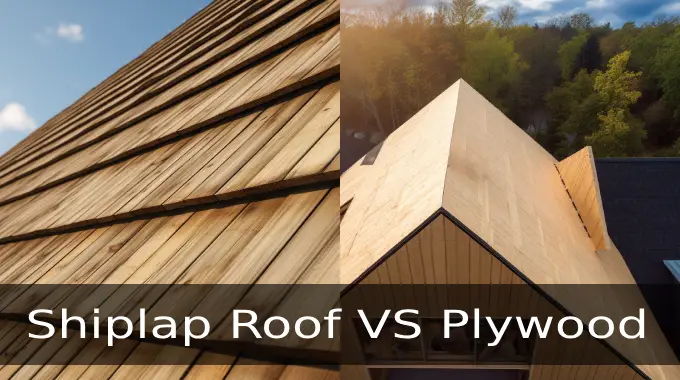
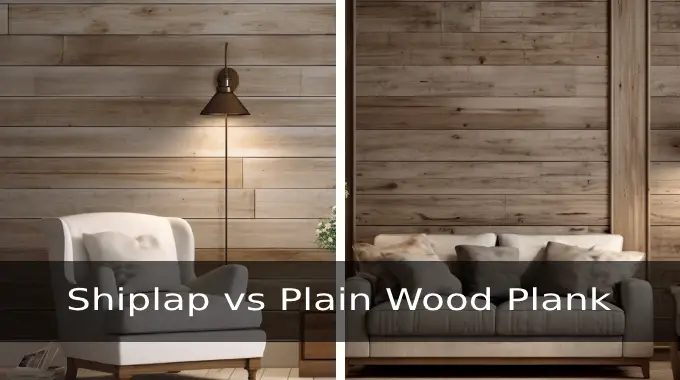
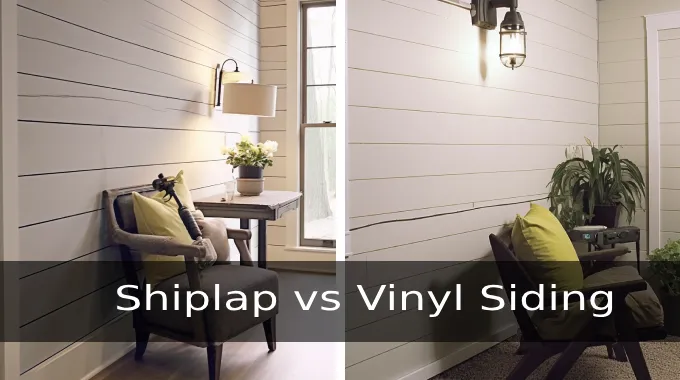
![MDF vs Wood Shiplap: 8 Differences [Exposed]](https://handyworkshop.com/wp-content/uploads/2023/09/MDF-vs-Wood-Shiplap.webp)